Warsaw, 19 May 2015
The House of Hospitality and Welcome of the Barnabites
Meeting of the Superior General and the General Consultors
with the Provincial Superiors, the Vice-Provincials and the Delegates
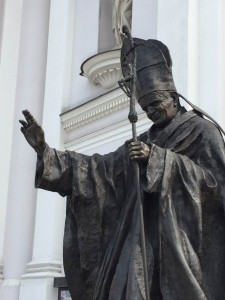 Summary of the Fourth Day Wednesday 20 / Thursday 21 May 2015
Summary of the Fourth Day Wednesday 20 / Thursday 21 May 2015
‘Do not be afraid! Open, indeed open wide, your doors to Christ …’
‘Jezu Ufam Tobie – Jesus, I trust in you!’
The pilgrimage of the Superior General, the General Consultors and the Major Superiors of the Order can be physically and symbolically included in these two messages which can be almost taken for granted at the level of their formal simplicity but which are overwhelming in their substantial radicality of contents at the level of spiritual renewal for believers and consecrated people – ourselves: ‘Do not be afraid!’ And ‘Jezu Ufam Tobie – Jesus, I trust in you!’.
Fr. Pessini when opening our meeting – on Monday 18 May of this year – had presented this journey to certain special places in the land of Poland specifically in these terms: ‘In the planning of this international meeting of ours, especial attention was paid to pilgrimage (not a mere touristic trip, as one could hurriedly think and/or understand). We will visit the important places in the life of John Paul II (Krakow, Wadowice and Czestochowa) as well as the Nazi concentration camp of Auschwitz. This pilgrimage in reality seeks to be a spiritual experience and specifically for this reason – and this is no accident – it has been placed in the middle of our meeting and not at its end! This is an important experience and an integral part of our meeting: not only reports and discussions in the hall but also an exercise by which to learn to walk, to reflect and to pray together! For a whole generation of today’s adults, and many of us here belong to this category, who live in and come from the so-called ‘outskirts of the world’, the charismatic figure of John Paul II has been for us a point of reference’.
We visited Wadowice, the city where St. John Paul II was born, with his baptismal font and an interactive museum which allows one in addition to devotion to immerse oneself in the history of the man and Christian, Karol Wojtyla, and his message; the Nazi concentration camp in the land of Poland of Auschwitz where Maximilian Mary Kolbe shared to the utmost the cross of Christ by sharing in the abysmal suffering and the devastating pain of the Jewish people and many other men and women, the victims of discrimination whose dignity was violated and whose only right was death; the ancient city of Krakow, a city of kings who were saints, of culture and of deep faith; and the sanctuary of Częstochowa where the Black Madonna of Jasna Góra with the ‘two signs of violence’ on her face which do not alter her serene expression continues to reanimate our hope as well and the sanctuary-monastery of Divine Mercy where Jesus through the weakness of Sr. Faustina Kowalska continues to irradiate the powerful message of the mercy of God.
Our journey during these days was organised ‘within’ three different life histories, three different pathways of saintliness. St. John Paul II, a Pope, an intellectual and a theologian. St Faustina Kowalska, a simple sister, cook and gardener who passed through only three classes of her elementary school. St. Maximilian Mary Kolbe, a Franciscan, for whom love for man rose above even the Nazi regime.
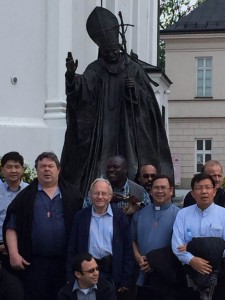 Following in the footsteps of these three saints we looked for elements by which to understand their saintliness and to draw up an answer to a question of capital importance: can saintliness be achieved by us as well?
Following in the footsteps of these three saints we looked for elements by which to understand their saintliness and to draw up an answer to a question of capital importance: can saintliness be achieved by us as well?
A good summary is offered to us by a song of Amedeo Minghi, a tribute to the Polish Pope who was also a saint and to his land…









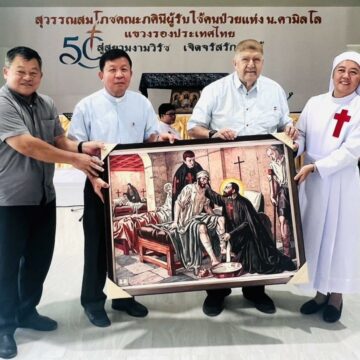
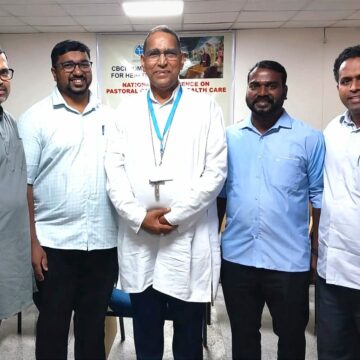
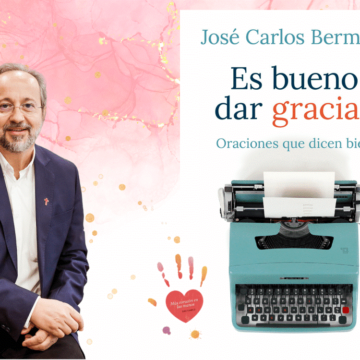

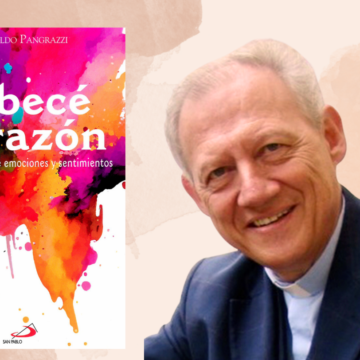
Camillians on Facebook
Camillians on Twitter
Camillians on Instagram